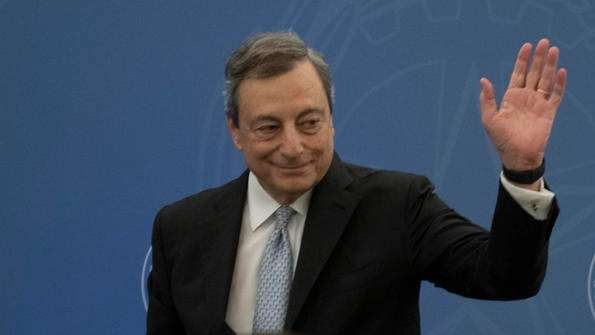
Mario Draghi, the central banker turned Italian prime minister, won plaudits for his calm leadership as Italy emerged from the coronavirus crisis but suffered the same fate as many of his predecessors, brought down by fractious internal politics.
Draghi, a prominent figure on the international stage as the former head of the European Central Bank, handed in his resignation on Thursday (21 July) after his broad national coalition formed in February 2021 fell apart.
His time in government was taken up with tackling the COVID-19 emergency and adopting scores of measures pledged to the European Commission in return for the initial instalments of some 200 billion euros of EU pandemic recovery funds.
He helped to give Italy a greater role on the international stage, strongly backing Ukraine in its war against Russia in the face of public opinion that was more divided than in other European countries.
Draghi’s government also introduced a series of measures to protect Italians from the worst effects of the cost-of-living crisis and started to wean the country off its reliance on imported Russian gas.
However, the divisions in his government and his relatively short tenure meant that Italy was unable to make much progress in reforming an economy that has long underperformed peers.
Back to national politics
Little over a year after leaving the presidency of the Frankfurt-based European Central Bank, Draghi was asked by Italy’s head of state early last year to resolve the latest bout of political chaos in Rome and form the country’s 67th post-war government.
Moving from the hushed halls of Frankfurt’s Eurotower to the mayhem of Rome’s political arena, Draghi had to switch from talking interest rates with fellow central bankers to negotiating with rabble-rousing politicians such as Matteo Salvini, head of Italy’s hard-right League party.
He initially seemed to have the golden touch, overseeing an economic rebound at home and bringing a touch of gravitas that was welcomed by his fellow European leaders.
Things started to turn sour from early in the new year when Draghi missed out on the role of president in a vote of more than 1,000 parliamentarians and regional delegates.
With a national election due in the first half of 2023, the disparate parties in his coalition soon began to fight among themselves with an eye to improving their poll standings.
Crisis manager
Urbane, cosmopolitan and softly spoken, Draghi has never made a drama out of a crisis.
He was a lynchpin of the Italian Treasury in the turbulent early 1990s when Italy was forced out of the European exchange rate mechanism, devalued its lira currency and faced the risk of being unable to join the European monetary union.
This was when the media came up with the “Super Mario” tag due to his frenetic activity as Treasury director general, from organising privatisations to helping draft the Maastricht Treaty that set the ground rules of the euro project.
After leaving Italy to become vice-president of Goldman Sachs in London from 2002-2005, Draghi’s reputation as a crisis manager was burnished when he was called back to Rome to revive the fortunes of Italy’s central bank, whose governor Antonio Fazio had been forced out by a corruption scandal.
At the Bank of Italy, Draghi’s international standing and open, outward-looking approach were refreshing after Fazio’s parochialism and closed management style, and paved the way for his ascent to the presidency of the ECB from 2011 to 2019.
In 2012, after his famous pledge to do “whatever it takes” to save the euro at the height of the currency bloc’s sovereign debt crisis, Draghi became the darling of financial markets and one of Europe’s most recognised and powerful figures.
(Edited by Georgi Gotev)
Source: euractiv.com



